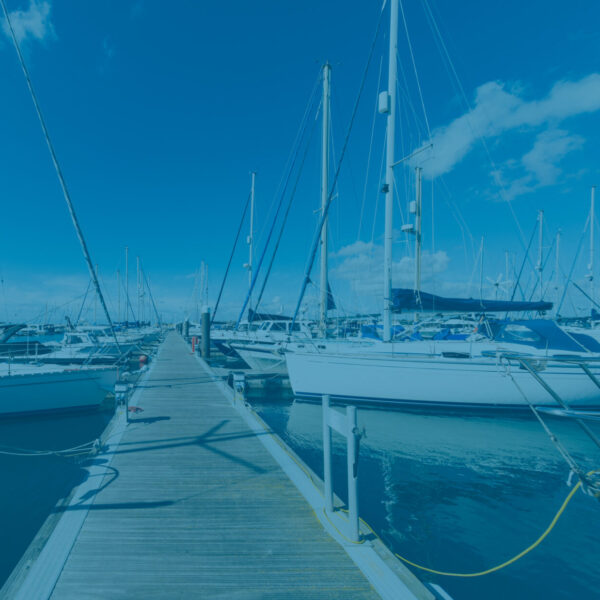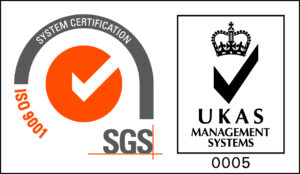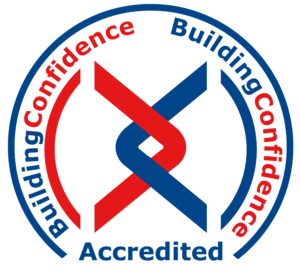Tactile Paving Guidance
When moving around the pedestrian environment, visually impaired people actively seek and make use of contrasts in the surface texture underfoot. Although the ability to detect contrasts in texture underfoot varies from one individual to another, tactile paving has been developed to be detectable by most people but without constituting a trip hazard or causing extreme discomfort.
Tactile paving surfaces convey important information to visually impaired pedestrians about their environment so it essential that each type of tactile paving surface is exclusively reserved for its intended use and consistently installed in accordance with national guidelines. Visually impaired people are becoming increasingly mobile, so it’s very important that conflicting and confusing information is not conveyed.
There are six kinds of tactile paving.
In-Line Blister Paving
A detectable kerb prevents visually impaired people from unknowingly stepping off the footway into the road. However, to ensure individuals in wheelchairs can cross roads easily, pedestrian crossings offer a stretch of pavement that is flush with the road level. If there is no kerb, some other readily identifiable indicator must be used to provide warning and guidance for visually impaired. The in-line blister tactile surface was developed to provide this warning and should be installed at both controlled and uncontrolled crossing points including zebra, pelican, puffin, toucan and traffic signals with pedestrian phases:
- where the footway has been dropped flush with the carriageway; or
- where the carriageway has been raised to the level of the footway.
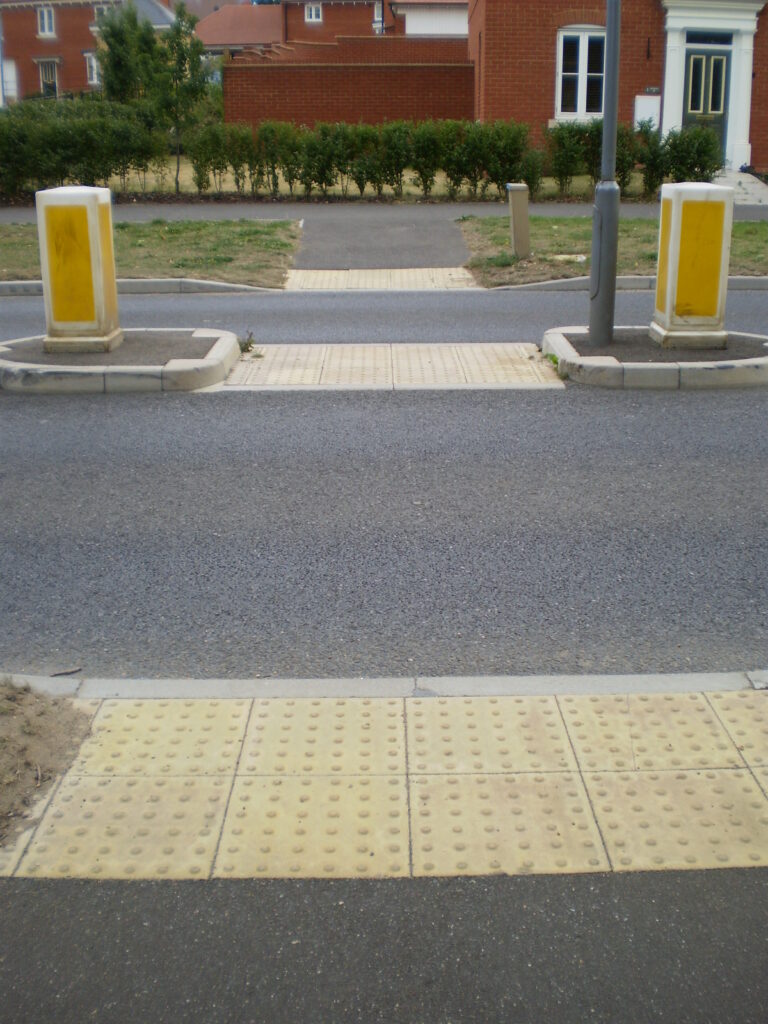
Corduroy Paving
The purpose of the corduroy tactile surface is to warn visually impaired people of the presence of specific hazards: steps, level crossings or the approach to on street light rapid transit (LRT) platforms. It conveys the message ‘hazard, proceed with caution’.
The corduroy surface can be used for any situation (except at pedestrian crossings), for example:
- the top and bottom of steps;
- the foot of a ramp to an on-street light rapid transit (LRT) platform (but not at any other ramp);
- a level crossing;
- where people could inadvertently walk directly on to a platform at a railway station; and
- where a footway/footpath joins a shared route
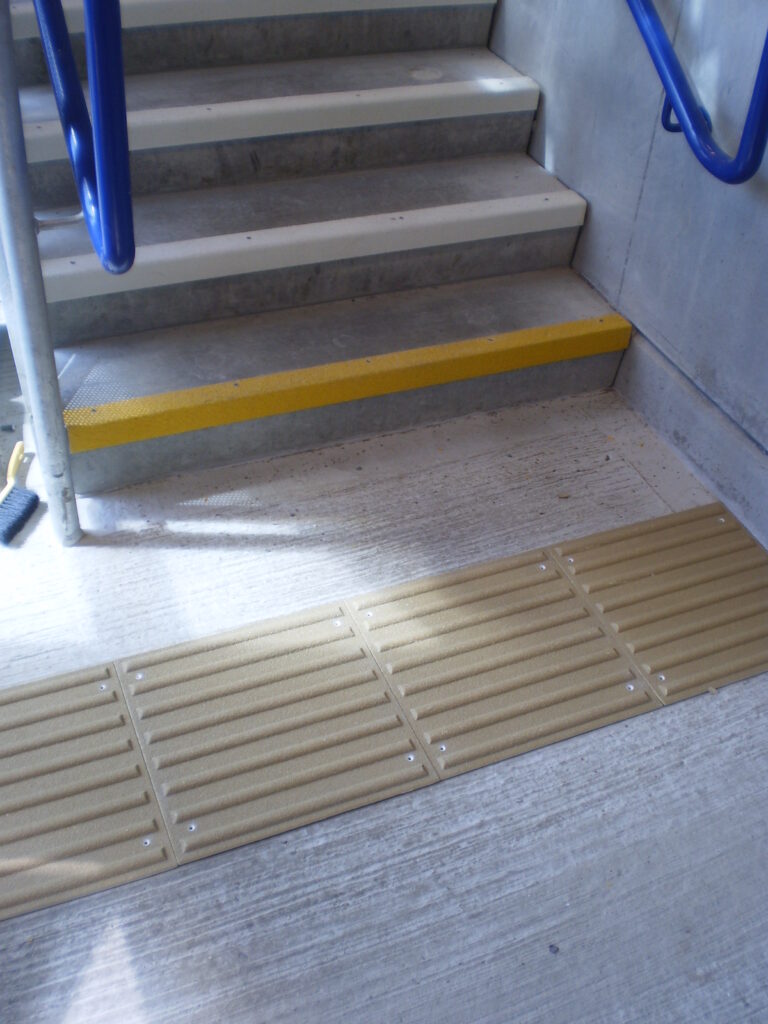
The surface must not be used to warn of obstacles such as street furniture and it is not recommended on raised bus stops.
The paving should be laid so that the bars run transversely across the direction of pedestrian travel and should extend across the full width of the hazard. Where possible, the surface should start 400mm from the hazard. If the surface is installed closer to the steps, people may not have enough time to adjust their walking speed.
Off-Set Blister Paving or Platform Edge Warning Surface
The purpose of this surface is to warn visually impaired people of the edge of all railway platforms including:
- heavy rail platforms;
- off-street light rapid transit (LRT) platforms; and
- underground platforms

It can be any colour (other than red), but should provide a good contrast with the surrounding area to assist partially sighted people. The platform edge (off-street) warning surface should be laid immediately behind the platform edge coping stone. In most cases this will be between 600mm and 700mm back from the platform edge, but in some circumstances this may be as little as 500mm. It should never be less than that because people may not have enough time to stop walking once they have detected the tactile surface. The surface should be installed to a depth of 400mm along the entire length of the platform.
Platform Edge (on-street) Warning Surface
The purpose of the platform edge (on-street) warning surface is to warn people that they are approaching the edge of an on-street Light Rail Transit (LRT) or tram platform. There are currently only nine UK cities that have LRT schemes – Birmingham, Blackpool, Edinburgh, London (Croydon and Docklands), Manchester, Newcastle, Nottingham and Sheffield. The tactile surface comprises large lozenge shapes.
Segregated Shared Cycle Track/Footway Surface and Central Delineator Strip
The last option in our tactile paving guidance is a ladder version designed to keep visually impaired pedestrians on the correct side of pavements that include a cycle path, ladder design paving is used to denote the shared use.
The tactile surface should be laid at the beginning and end of the segregated route, at regular intervals along the route and at any junctions with other pedestrian or cyclist routes. This lets people know they are entering or leaving the route. On the pedestrian side, the surface should be installed with the bars running transversely across the direction of travel; on the cyclist side, the surface should be laid with the bars running in the direction of travel. The central delineator strip should run the entire length of the route, creating a “kerb” between the designated pedestrian side and the designated cyclist side.
GRP Tactile Paving from Stock
Step on Safety offers three kinds of Tactile Paving – In-Line Blister, Corduroy and Off-Set Blister (Platform Edge Warning). Made from Glass Reinforced Plastic (Fibreglass) with a hardwearing anti-slip surface, our tiles are 400mm square and just 4mm thick which means they can be installed on top of existing surfaces.
Further guidance on the use of tactile paving surfaces including recommended layouts can be found here.


